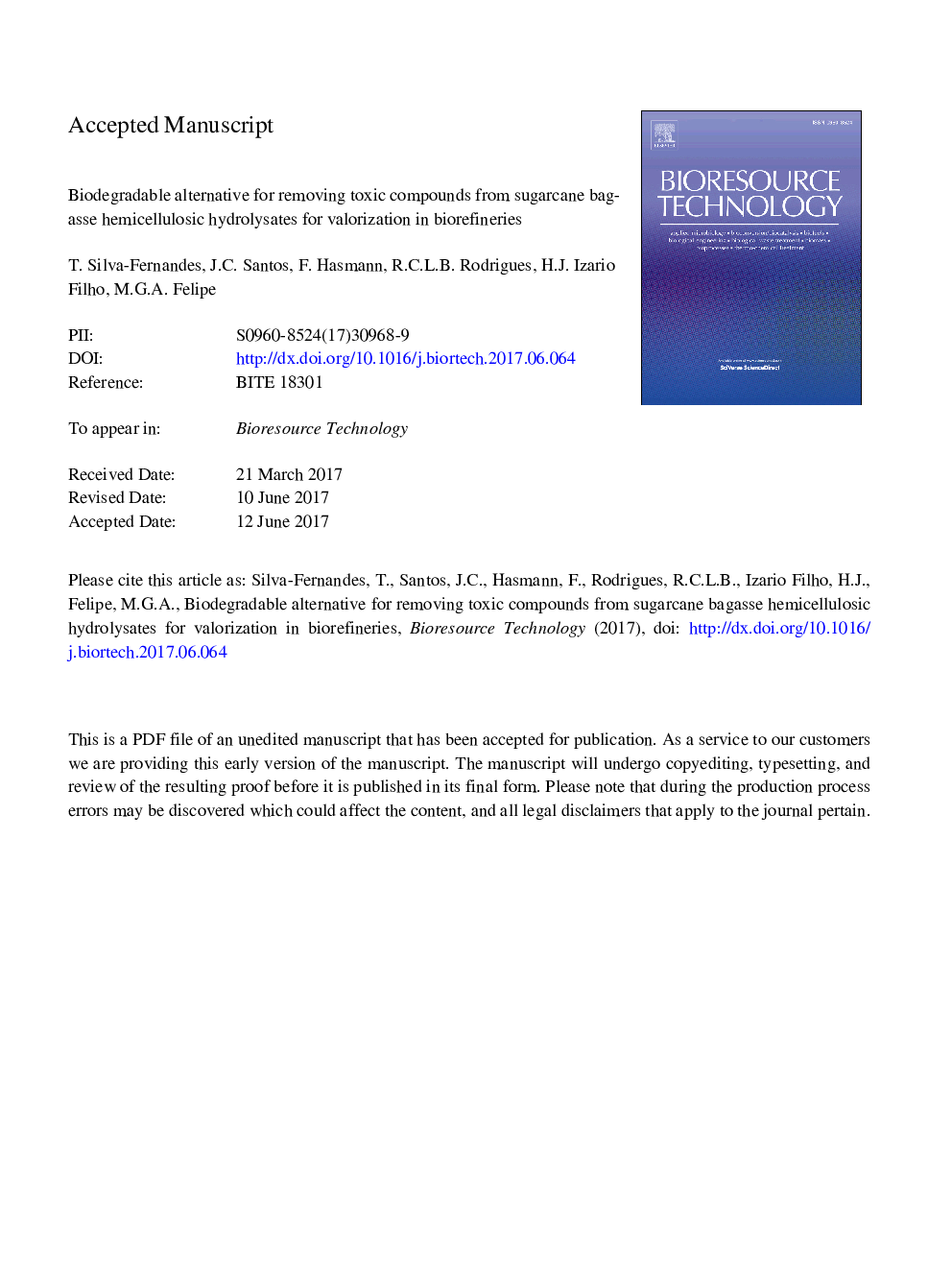| Article ID | Journal | Published Year | Pages | File Type |
|---|---|---|---|---|
| 4996939 | Bioresource Technology | 2017 | 37 Pages |
Abstract
Among the major challenges for hemicellulosic hydrolysate application in fermentative processes, there is the presence of toxic compounds generated during the pretreatment of the biomass, which can inhibit microbial growth. Therefore, the development of efficient, biodegradable and cost-effective detoxification methods for lignocellulosic hydrolysates is crucial. In this work, two tannin-based biopolymers (called A and B) were tested in the detoxification of sugarcane bagasse hydrolysate for subsequent fermentation by Candida guilliermondii. The effects of biopolymer concentration, pH, temperature, and contact time were studied using a 24 experimental design for both biopolymers. Results revealed that the biopolymer concentration and the pH were the most significant factors in the detoxification step. Biopolymer A removed phenolics, 5-hydroxymethylfurfural, and nickel from the hydrolysate more efficiently than biopolymer B, while biopolymer B was efficient to remove chromium at 15% (v/v). Detoxification enhanced the fermentation of sugarcane bagasse hydrolysate, and the biopolymers showed different influences on the process.
Keywords
Related Topics
Physical Sciences and Engineering
Chemical Engineering
Process Chemistry and Technology
Authors
T. Silva-Fernandes, J.C. Santos, F. Hasmann, R.C.L.B. Rodrigues, H.J. Izario Filho, M.G.A. Felipe,
